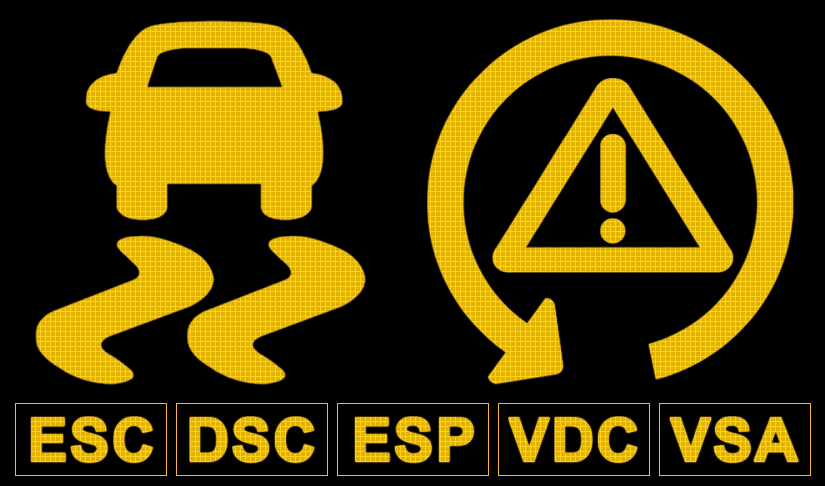What ESC is in Cars Explained
ESC is a computerised stability system that helps to prevent the loss of vehicle control. Various sensors around the car monitor stability. If instability is detected, ESC operates by automatically applying individual wheel braking a reduction of engine power or a combination of both.
ESC is comprised of a combination of stability systems which includes:
- The Anti-lock Braking System (ABS)
- The Traction Control System (TCS)
- Electronic Brake Force Distribution (EBD; which can vary the amount of brake force on individual wheels)
- Active Yaw Control
These systems are controlled by the car’s computer (ECU) and based on the data received by the vehicle’s sensors, these various systems can be utilised either individually or in union.
ESC is not intended to improve the handling performance of a car, but its purpose is to reduce the loss of control. The system can prove highly beneficial, especially when driving in adverse road conditions such as icy or wet roads.
ESC is so effective at reducing loss of control that all new vehicles have been fitted with ESC since 2014. ESC cannot prevent all accidents, but cars that are fitted with ESC are 25 percent less likely to be involved in a fatal accident when compared to cars that do not have ESC.
What Does ESC Stand For?
ESC stands for ‘Electronic Stability Control’. Vehicle manufacturers have their own versions of the stability system fitted to their cars and though the system uses largely the same technology and operates in a similar way, you may notice a different name or acronym.
Other Names for Electronic Stability Control
The various other names associated with the Electronic Stability Control system are:
- ESC: Electronic Stability Control
- DSC: Dynamic Stability Control
- ESP: Electronic Stability Programme
- VDC: Vehicle Dynamic Control
- VSA: Vehicle Stability Assist
- ASC: Active Stability Control
For vehicles that have ESC (or other versions) fitted, the system is automatically activated at each engine start. If a driver wishes to deactivate ESC, this must be completed manually by pressing a button or by accessing the vehicle’s system settings. Some vehicles may only allow for a reduction in the control that ESC has rather than completely shutting it off.
Many of these stability systems include a traction control system (TCS) also known as ASR (Anti-Slip Regulation). Traction control can often be switched off independently from ESC.
| More about Electronic Stability Control (ESC) |
|---|
